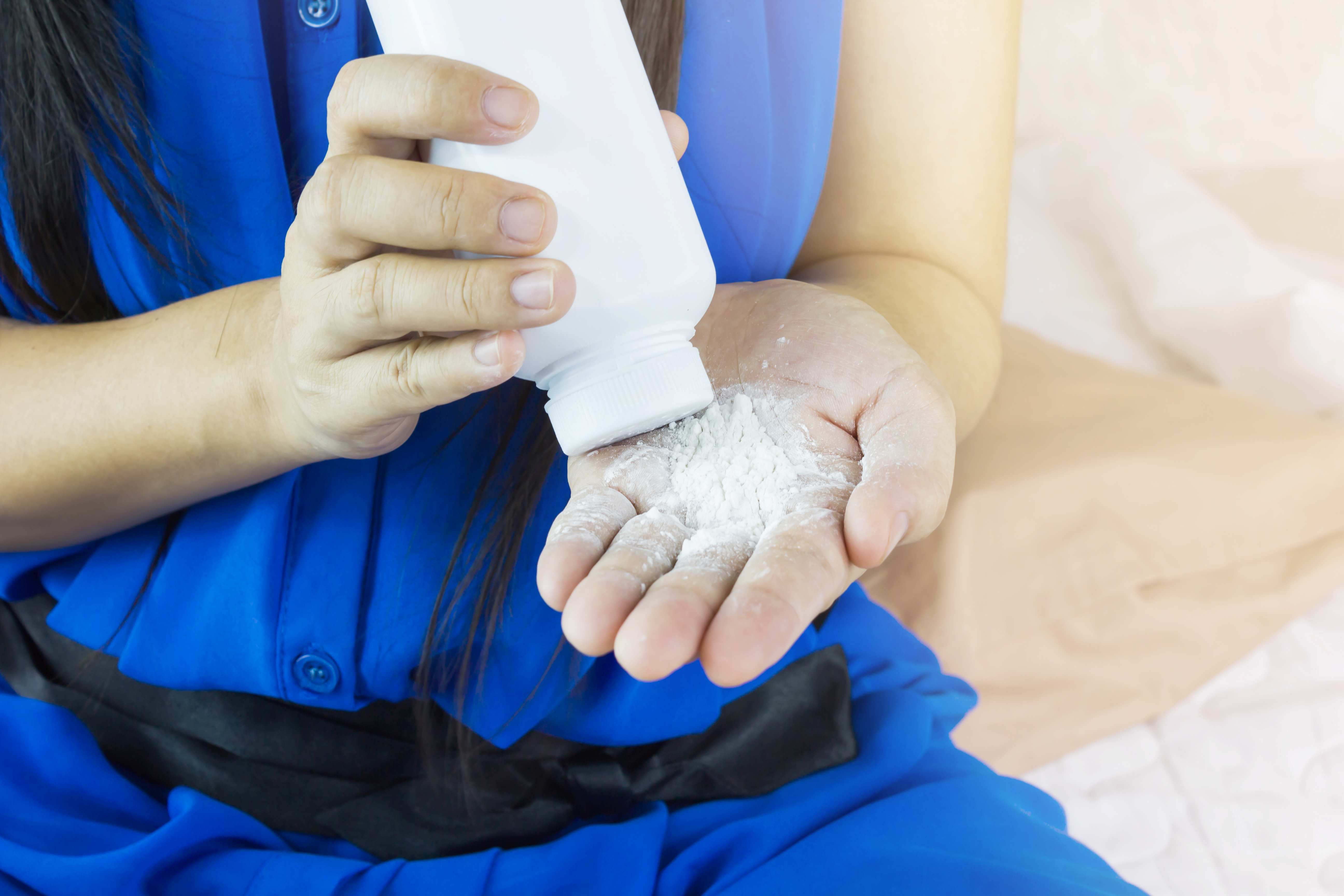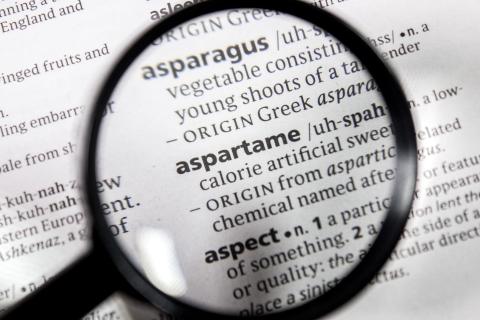Talc is classified as "probably carcinogenic to humans" by the IARC
Talc has been classified as "probably carcinogenic to humans" by the International Agency for Research on Cancer (IARC), an agency of the World Health Organisation. In a statement, IARC reports that, after thoroughly reviewing the available scientific literature, the expert working group classified talc as probably carcinogenic to humans (Group 2A) "based on a combination of limited evidence of cancer in humans (for ovarian cancer), sufficient evidence of cancer in experimental animals, and strong mechanistic evidence that talc exhibits key features of carcinogens in human primary cells and experimental systems". In the same monograph, the agency classified acrylonitrile as "carcinogenic to humans" (Group 1). It is a chemical used in the manufacture of fibres for textiles, synthetic rubber and plastics. Both assessments are published in an article in The Lancet Oncology.

Alejandro Pérez Fidalgo - talco IARC EN
Alejandro Pérez Fidalgo
Medical doctor in the Oncology and Haematology Department at the Valencia Clinical Health Research Institute (INCLIVA), Valencia Clinical Hospital
The IARC agency, which is part of the WHO, has classified talc as a ‘probably carcinogenic’ agent, meaning that exposure to it might cause cancer. This classification of talc is based on existing studies that suggest, though not with sufficient robustness, that talc could increase the risk of cancer, particularly ovarian cancer.
This does not mean that someone who has used talc once or even regularly is clearly at risk, as the risk of developing cancer depends on the dose of exposure, duration, and manner of contact with the talc.
The studies supporting this classification have many biases, that is, certain confounding factors that prevent us from fully understanding or predicting the relationship between talc use or exposure and cancer.
In animals, it has been observed that talc has properties that produce malignant tumors, but this exposure to animals is experimental and does not always replicate what happens in humans. However, it demonstrates talc's capability to induce tumors in laboratory settings.
In human studies, there is a significant confounding factor: asbestos, a harmful substance that induces tumors, has been a contaminant of talc. Therefore, classic studies on talc usually included talc contaminated with asbestos. Thus, for this classification, studies using talc (without asbestos influence) have been used. Focusing on these studies, one of the problems is that in professional talc mining studies, most of the participants were men, and the presence of women was very low, so it cannot be correlated in this case with the risk of ovarian cancer.
The two studies supporting the recommendation included women who used talcum powder applied to the genital area. Applying talc in this area showed a slight increase in ovarian cancer, but not significantly, in a first study that included more than 250,000 people in the United States. A second analysis of 8 case-control studies, including more than 18,000 people (divided into cases, those who ever used talc vs. controls, those who never used talc), showed that women who had used genital talcum powder had a slightly higher risk of serous infiltrating ovarian tumors, clear cell tumors, and borderline serous tumors in a statistically significant manner. In those who used talc in other locations (i.e., not in the genital area), no increased risk of cancer was observed.
In summary, and based on this new classification (although not with great robustness), it would be advisable to avoid, as much as possible, the use of genital talcum powder, particularly in women. However, this does not mean that previous use of talc will cause cancer or that prior exposure to this agent will be clearly responsible for the appearance of a tumor.
Andrew Watterson - talco IARC EN
Andrew Watterson
Public Health Researcher, Faculty of Health Sciences of the University of Stirling, Scotland (UK)
The two decisions taken by IARC on acrylonitrile and talc are based on careful consideration of the evidence, and both are therefore evidence-based decisions that should inform policy and controls within workplaces. Consumers and workers should have access to the IARC information to help their own decision-making on what to use where choices are available.
The decisions mean we need good preventive and precautionary policy-making to remove exposures to talc, if at all possible, but it may well be harder to achieve than with ACN.
For acrylonitrile, it is clear there are either alternative materials available for many of its current uses, or the need for its use is not critical in the first place. This is the case with regard to its use in various fibres. The application of a toxic use reduction strategy, avoiding the risk of regrettable substitutes, should provide less hazardous alternatives to ACN. The use in plastics is now even more questionable when globally and within Europe, policies advocate major cuts in plastics use linked to wider environmental and health risks. Suggestions that there are no alternatives to ACN do not stand up to scrutiny in many cases. Worker protection should be improved with even tougher ACN exposure standards and the risks to smokers from ACN should be highlighted again.
Katie O'Brien - Talco IARC - EN
Katie O'Brien
Cancer epidemiologist, staff scientist at the National Institute of Environmental Health Sciences (US)
I worked with a panel of other scientists to evaluate the studies used in the IARC report on talc. The studies provided evidence that talc is probably carcinogenic to humans. The evidence was strongest in human cell and animal studies, but there were also many epidemiological studies that consistently showed an increased incidence of ovarian cancer among women who reported using talc powder in the genital region. Self-reporting can sometimes be unreliable, and there’s another confounder – asbestos. Talc powder may contain traces of asbestos, which is also a carcinogen. So, the human study evidence was not strong enough to say that talc causes ovarian cancer.
Industry standards for testing for asbestos in talc-based consumer products are not sufficient to rule out asbestos contamination, and therefore we could not determine whether the link between body powders and ovarian cancer is due to talc or asbestos. Women should consider the possible health effects of both talc and asbestos when they make decisions about using body powder and other talc-based personal care products.
The purpose of the IARC report on talc is to evaluate the potential for talc to cause cancer. This report will now be used by regulatory agencies around the world to assess actual risk for humans and to set safety standards or guidelines for talc exposure.
María Virginia Fernández González - Talco IARC - EN
María Virginia Fernández González
Pharmacist and member of the research group Soil Science and Geopharmacy at the University of Granada.
Our group has been studying talc as a mineral raw material for pharmaceutical and cosmetic use since the 1990s. We focus on the study of the pharmacopeial quality of talc for its use in pharmacies and cosmetics, combined with the mineral and geochemical quality of this raw material.
In our research, we have been able to verify that some of the talcum powders commercialized in the 1990s contained asbestos fibers (amphiboles), a material that presents a small particle size and a fibrillar morphology, which can be toxic according to the scientific literature. Our study techniques were mainly microscopic, X-ray diffraction, and specific pharmacopeia tests.
In recent research conducted by our group (since the 2010s), we have been able to verify that talcum powders for pharmaceutical and cosmetic use that are marketed in pharmacies and large stores in Mediterranean countries of Latin origin (Spain, France, Italy, Portugal) and others such as Norway, Morocco, and even on Amazon, no longer contain asbestos. However, they may still present some mineral impurities such as chlorites and carbonates (calcite and dolomite) or quartz; these are non-carcinogenic minerals but sometimes appear in appreciable amounts that cause the samples to fail pharmacopeial tests. These minerals have been detected using advanced techniques such as X-ray diffractometry (XRD) and scanning electron microscopy (SEM), associated with microanalysis (EDX), all without forgetting the tests of the European Pharmacopeia. Additionally, we studied the content of heavy metals (ICP-MAS).
In the detailed observation of the morphology and composition of talc particles by SEM-EDX, it was found that, sometimes, there are talc mineral fibers, but they are not elastic like asbestos and their composition is typical of the talc mineral. Furthermore, they are exfoliative and of little consistency; on the skin, they will easily crumble.
As we said, we have not detected asbestos-like fibers.
In our opinion, the main issue today is to ensure that talc classified as cosmetic contains at least 90% talc mineral (with a maximum of 10% of the main non-carcinogenic impurities). [That is,] it should have mineral purity.
Additionally, we suggest that the industry should carry out exhaustive quality control on all talcum powders before they are commercialized in pharmacies or cosmetics, to comply with the tests included in the pharmacopeia.
Stayner L et al.
- Research article



